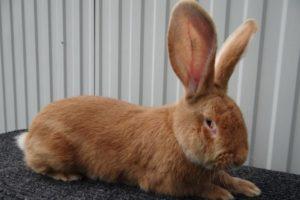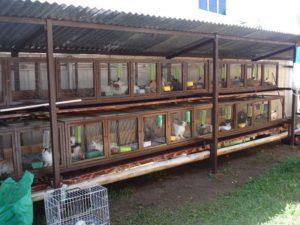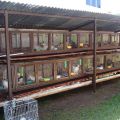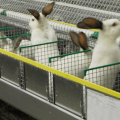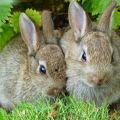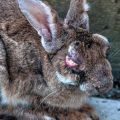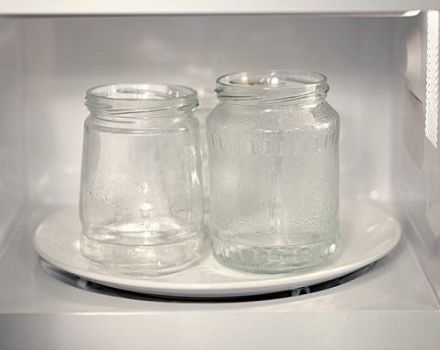Description of the Dutch dwarf rabbit breed, keeping rules
The decorative Dutch breed is one of the most popular in the world due to its diminutiveness and variety of animal colors. The Dutch dwarf rabbit is loved for its playful, friendly, inquisitive behavior, affection for the owner, affectionate and non-aggressive disposition. The rabbit, which is not capricious in the care and maintenance, is kept exclusively as a pet.
History of origin
The history of the emergence of the Dutch dwarf breed is difficult to understand, there is not enough information. The formation of the breed began in the 1800s, when the British were breeding Danish rabbits. Due to genetic mutations, Danish rodents acquired an unusual appearance: a white fur coat, a red iris of the eyes, a muscular body, a delicate and fluffy coat. These individuals were named Polish.
Mutant rabbits continued to be selectively tested until World War II. In wartime, a unique population was on the verge of extinction. But after the war, the Danish breed was restored, breeders began to experiment again.
The result of the experiments was the presentation in 1947 at the Amsterdam exhibition of Dutch rabbits, from which the decorative Dutch dwarf breed was later obtained.
Description of the breed of dwarf rabbits
Dutch rabbits are small, cute, their body weight does not exceed 1.3-1.5 kg. External characteristics according to the breed standard:
- the physique is stocky, with developed muscles, the shape of the body is cylindrical;
- the head is oval, small;
- the neck is not visible;
- nose slightly flattened;
- the hind legs are strong, sinewy, much longer than the front;
- the coat is dense, delicate, shiny, hairs of medium length;
- The colors are varied, but the most common are monochrome, tan, agouti, shaded.

The Himalayan, chocolate, red, sable and silver colors of the Dutch rabbit are popular. The dwarf rabbit is playful, friendly. This is a wonderful pet for a large family with children. Dutch rabbits like human society, they enjoy communication and affection, but they can show aggression, bite or paw if they are frightened or offended. Therefore, you should not start a Dutch pet if there is a small child in the family who does not yet understand that animals need to be treated gently and carefully, without causing pain and harm.
Like all types of rabbits, the Dutchman is shy, it takes a long time to adapt to a new habitat, it takes him several days to get used to new owners.But after adaptation, the pet will love the owners, will treat them with tenderness and trust.
Main pros and cons
The Dutch dwarf rabbit is popular because it has many advantages over other decorative breeds:
- docile and friendly character, lack of unreasonable aggression;
- non-capriciousness in care and maintenance;
- cleanliness;
- miniature size that allows you to keep a rabbit in a city apartment;
- lack of capriciousness in nutrition;
- quick training to the tray, thanks to which cleaning after the animals does not cause problems;
- good looks, decorativeness.
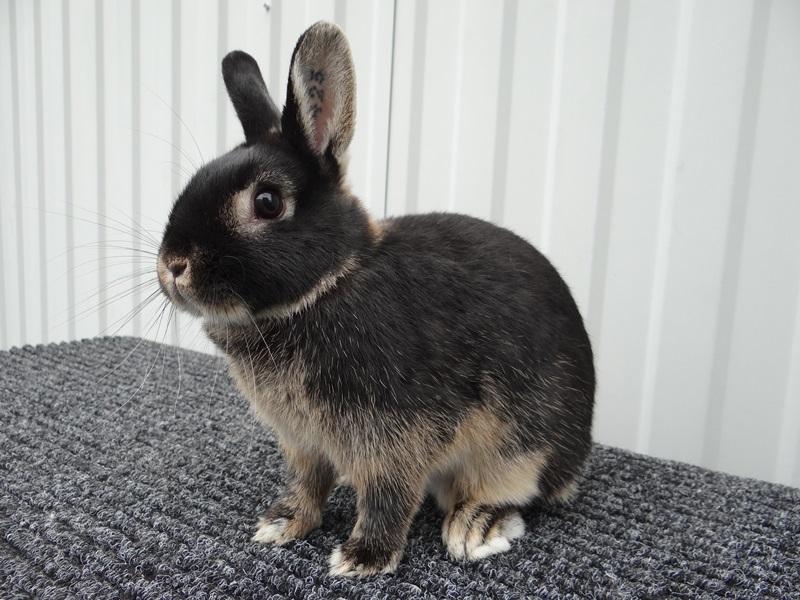
There are also breed disadvantages that cannot be avoided:
- tendency to numerous diseases, including incurable ones;
- the need for large expenditures on the cage, care and maintenance;
- the need for regular cleaning of the cage due to continuous molting;
- regularly checking the quality of water and food;
- the pet's habit of gnawing objects in the way (this must be taken into account when releasing it to run around the apartment);
- unpleasant rabbit smell;
- nocturnal rodent activity.
Breed types
There are two varieties of the breed: the straight-eared and the lop-eared Dutch rabbit. Representatives of the second variety differ from their straight-eared counterparts by long, drooping ears, which descend 2-3 months after the birth of the rabbit. Due to the lowered ears, the decorative rabbit in front looks like a lamb with horns, therefore the breed variety is called the Dutch ram.
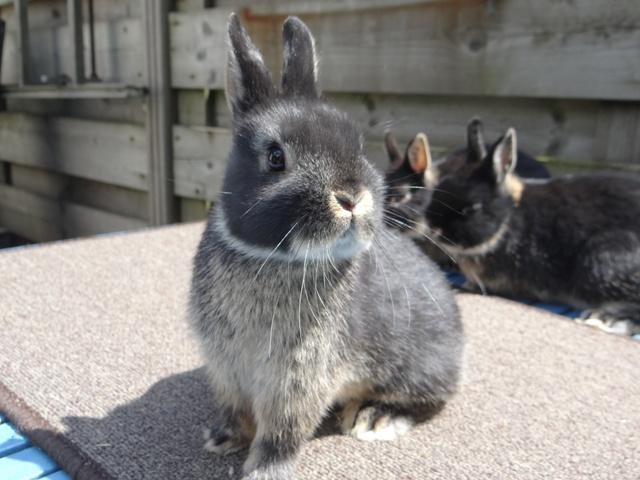
Outwardly, representatives of both varieties are similar, require the same conditions and rules of content. The differences are insignificant: the lop-eared rabbit is more stocky, muscular, the outline of its muzzle is rougher, the body is more angular.
Conditions of maintenance and care
The room in which the Dutch rabbit is kept must be ventilated, but drafts are not allowed. The cage should be spacious (the optimal size is 150 × 60 cm and height 60 cm), since dwarf pets are active and playful. Every day for a couple of hours the rabbit is taken out of the cage so that it can run and warm up.
The bottom of the cage should be made of plastic, not twigs, otherwise the animal will damage its paws. A house, a tray, a feeder and a drinker are placed in the cage. Cleanliness is maintained on a regular basis, and cleaning is carried out every week using disinfectants (but not chemicals). The feeder and drinker are cleaned and washed daily. The rods of the cage lattice should not be covered with paint, as the pet will certainly chew on them and may be poisoned.
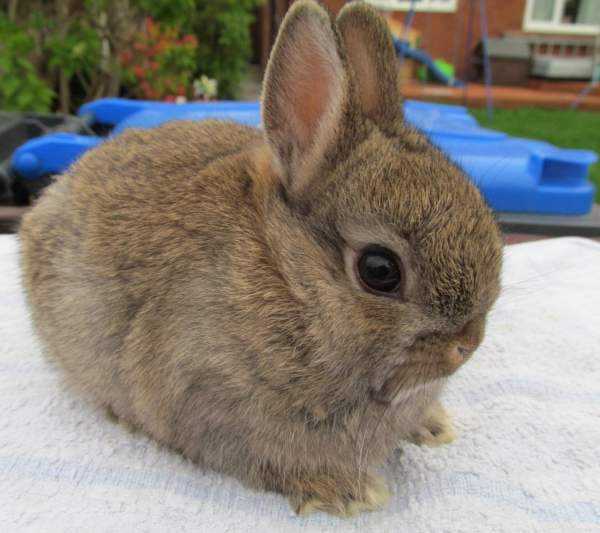
Dwarf rabbits do not need bathing. But you need to comb your pet regularly. If the rabbit gets dirty, wash the contaminated area of the body. If the animal is completely dirty, then it is washed in a bowl of warm water, keeping the ears so that they do not get wet.
Feeding features
The basis of the diet of dwarf rabbits is hay and twigs. Vegetables are given 3-4 times a week. Compound feed is given twice a day, 40-60 g per 1 kg of animal body weight. The rabbit is treated with fruits and berries no more than 2 times a week, the daily portion is a teaspoon. Rodents eat throughout the day, but in small portions, so there should always be food in the feeder.
Do not give a dwarf pet:
- tomatoes and other nightshades, food beets, onions, red cabbage;
- dairy products;
- leguminous crops;
- bakery products, sweets;
- meat, fish;
- twigs and fruits of stone fruit trees;
- ornamental plants that may be poisonous.

Do not feed the Dutch rabbit with dusty food. Dust accumulates on the mucous membranes of the respiratory system, as a result, the pet suffocates and dies.
Breeding conditions
Dwarf Dutch rabbits are propagated in the same way as ordinary ones.The Dutch breed is fertile, the rabbit brings 10-12 cubs at a time, and during the year it can give birth 4-6 times. Dwarf rabbits reach sexual maturity by 4 months of age, but they are better to happen at 5 months.
The female is introduced to the male, placed next to him, kept in one cage from a week to two. Pregnancy in a dwarf rabbit lasts about 25 days. Before giving birth, the expectant mother becomes nervous, builds a nest. The female gives birth herself, human help is not required, she also takes care of the offspring on her own. Newborn rabbits should not be touched, otherwise the mother may refuse them due to stress. The lactation period lasts about 40 days. 2-month-old cubs are weaned from the mother. From 3 months old, rabbits are settled in different cages, as sexual changes begin.
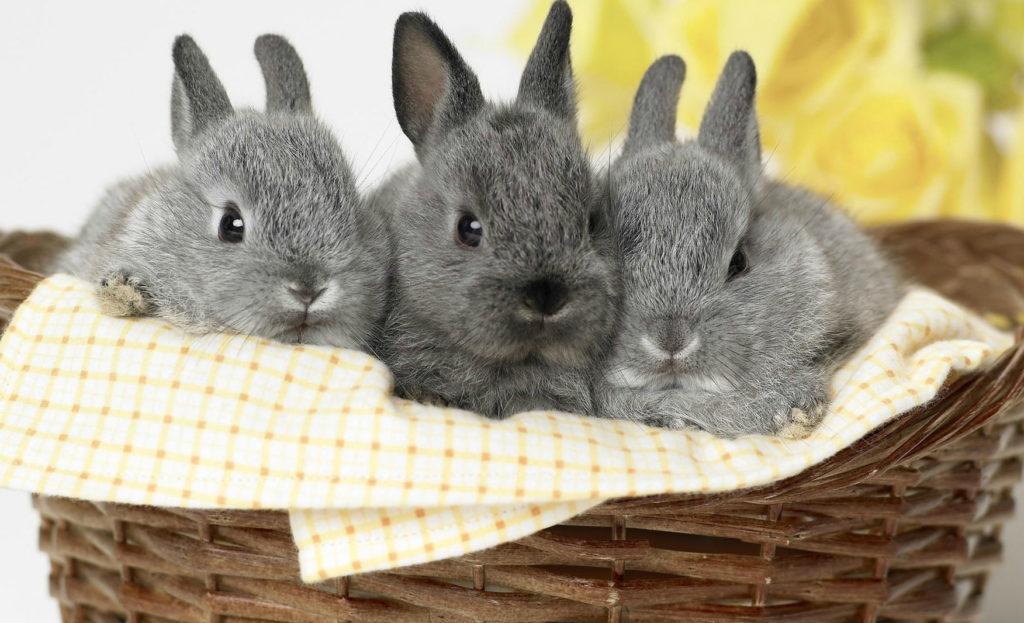
Possible diseases
Dutch dwarf rabbits are susceptible to many diseases. The most commonly diagnosed:
- viral hemorrhagic disease;
- stasis of the digestive tract;
- coccidiosis;
- myxomatosis;
- pasteurellosis;
- urinary dermatitis.
Dwarf rabbits are given vaccines against hemorrhagic disease and myxomatosis. The first comprehensive (against both diseases) vaccination is carried out when the pet reaches 45 days of age. If there is no complex vaccine, then the first injection is given for myxomatosis, after 10 days - for hemorrhagic pathology. Then the animal is vaccinated at 4.5 months, and then every 6 months. If you plan to transport the Dutch rabbit abroad, you will have to supply the rabies vaccine marked in the veterinary passport.
Where is the best place to buy a dwarf rabbit
Buy Dutch rabbits that have reached 3-4 months of age. They choose healthy, active and curious individuals. You should not buy a Dutch dwarf rabbit on the market or from a dubious seller: there is a great risk of becoming the owner of a sick or outbred animal. The best purchase option is in the nursery, where the breeder will tell you how to care for the rabbit, provide the pedigree and all the necessary documents. You can also buy a pet at a pet store, but the seller is unlikely to competently advise on the rules of care.
